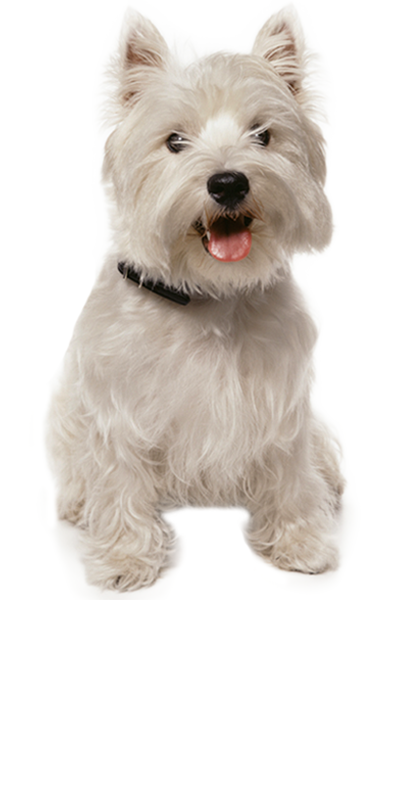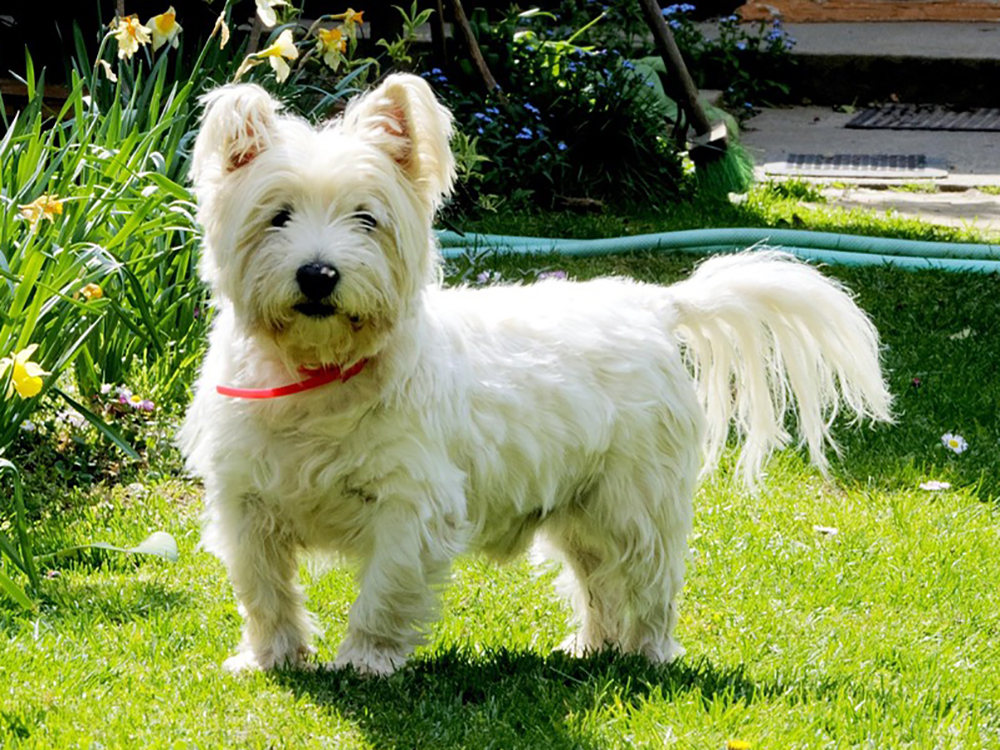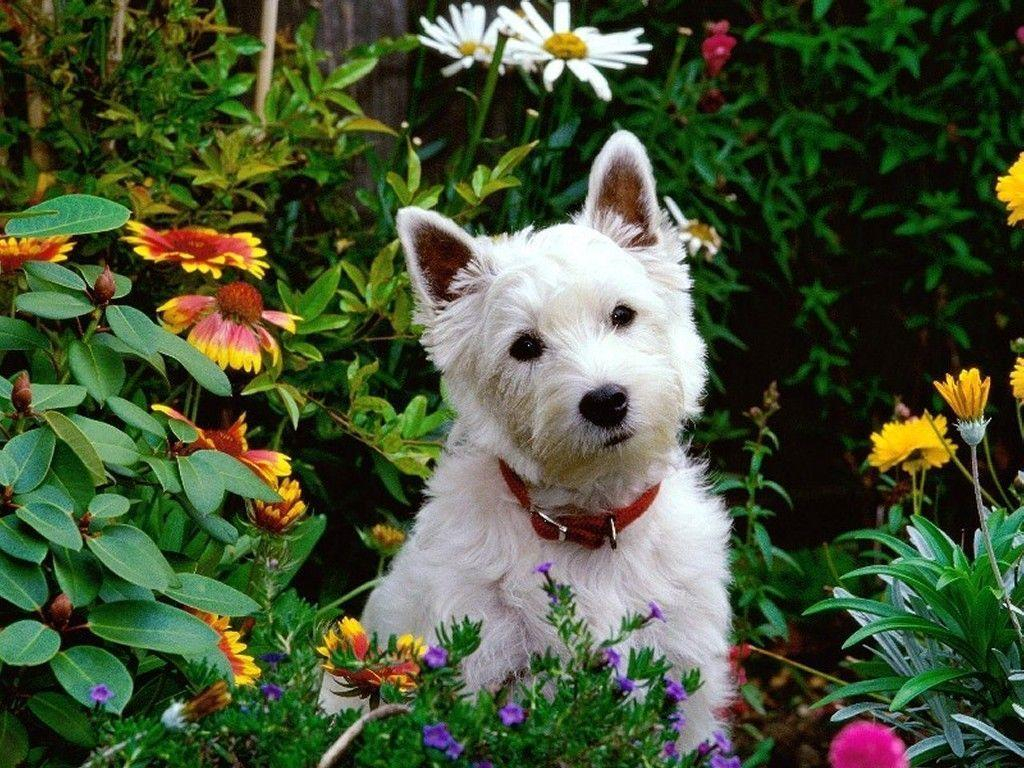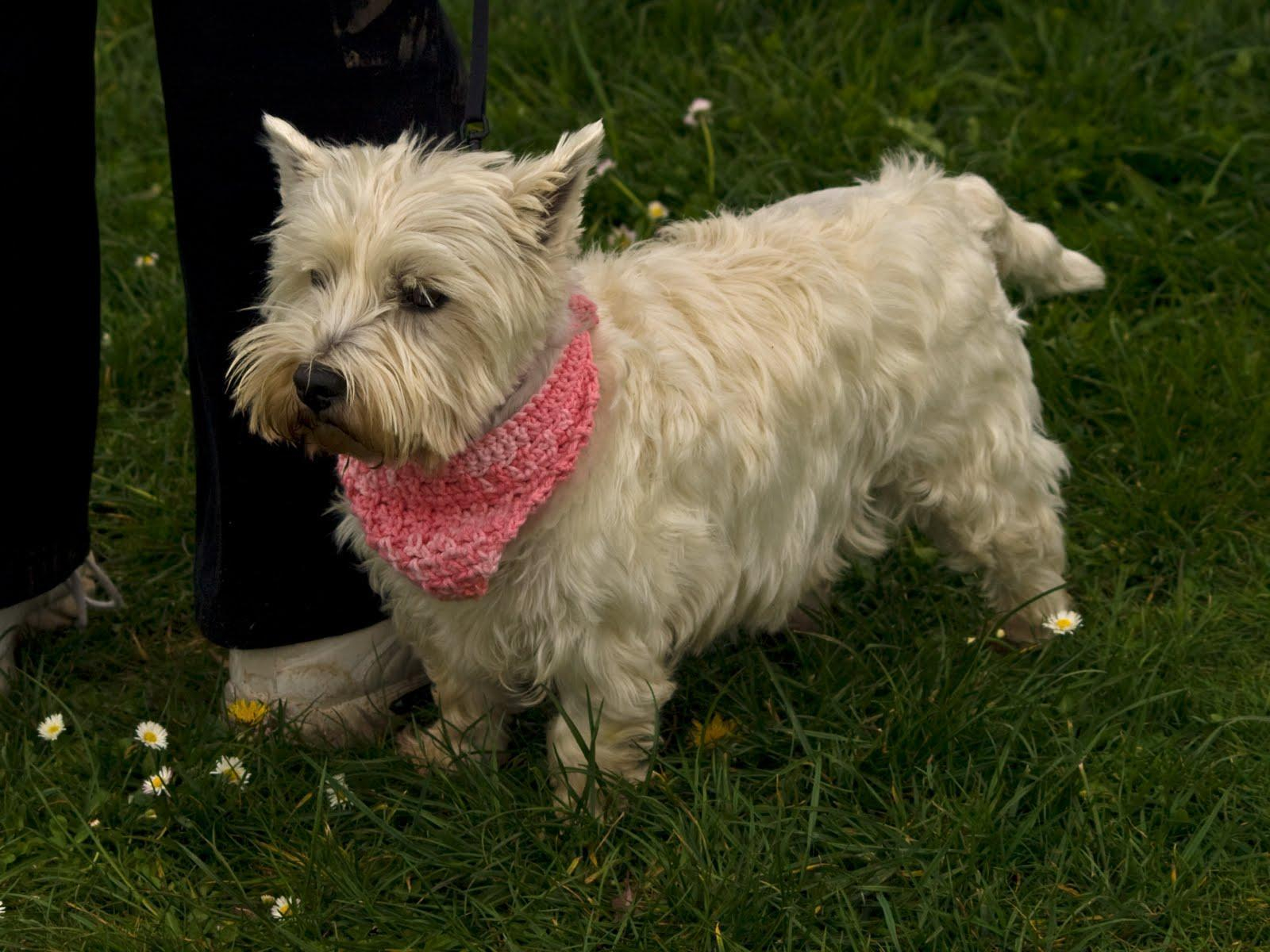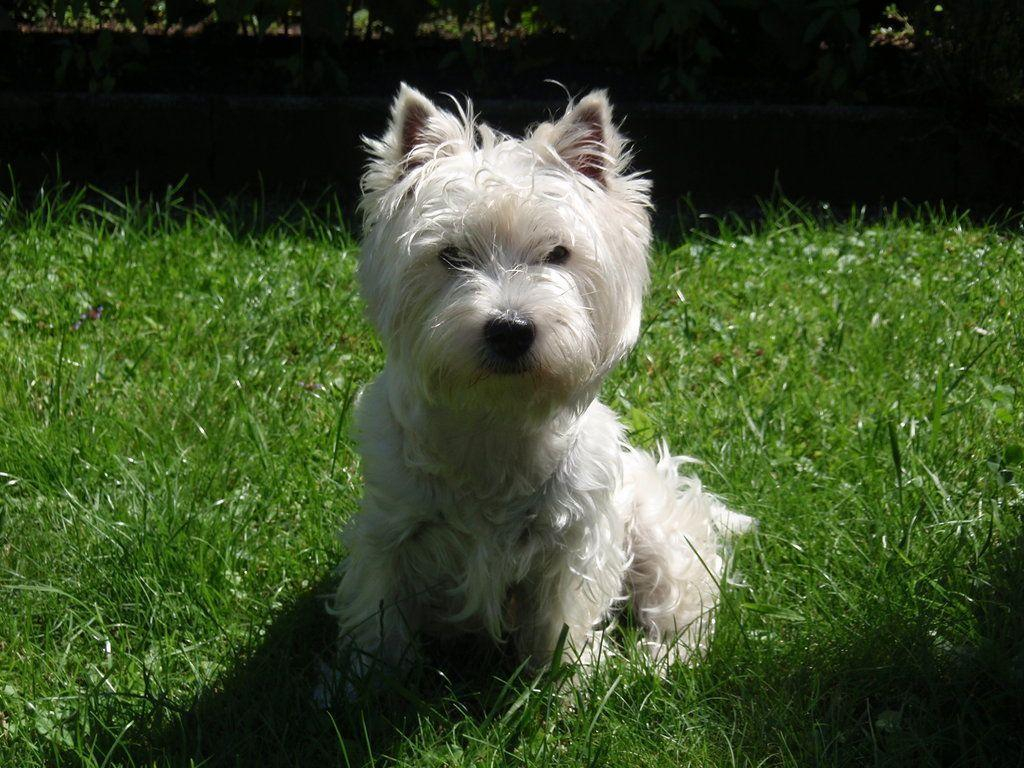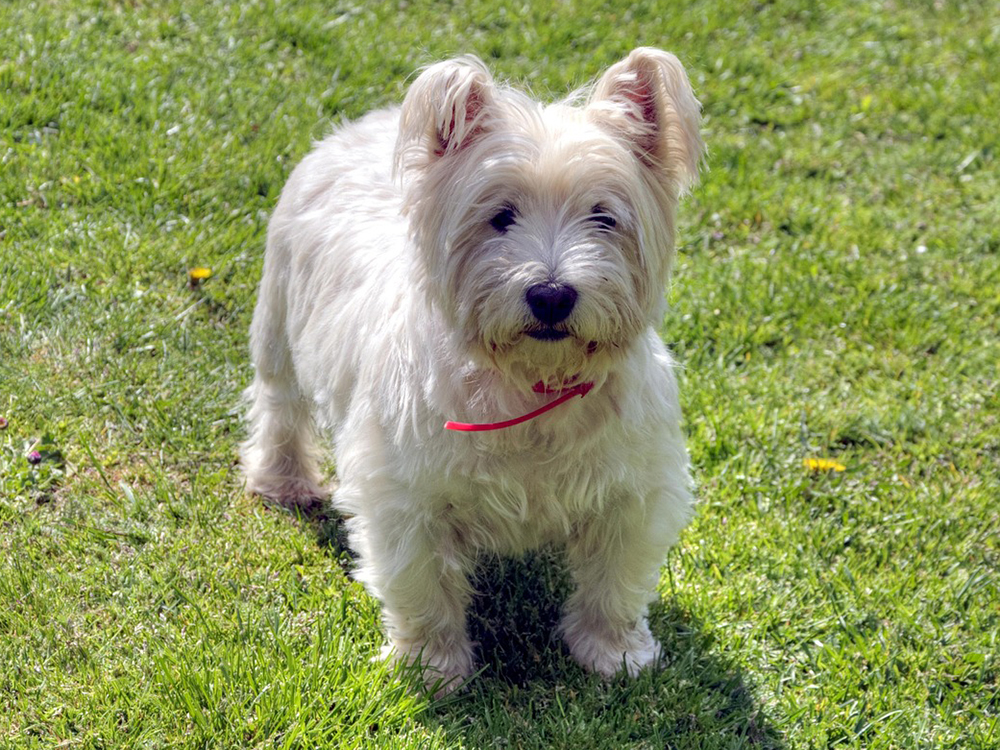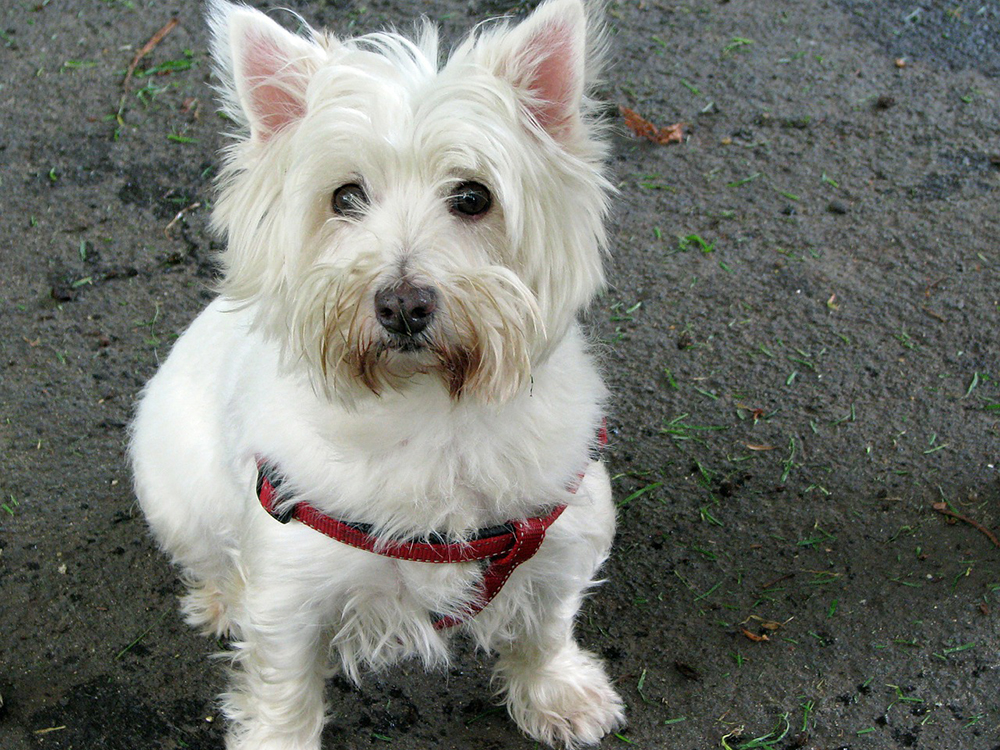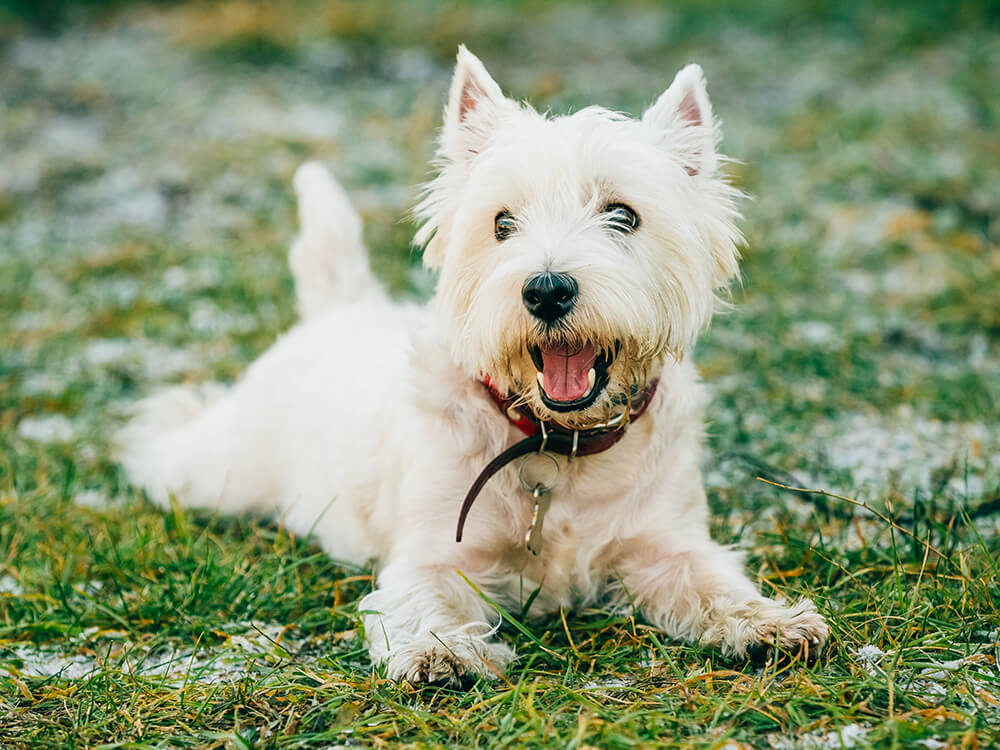
West Highland Terrier Breed Pictures
Vital Breed Stats
| Height: | 25 - 30 cm M | 23 - 28 cm F |
| Weight: | 7 - 10 kg M | 6 - 7 kg F |
| Breed Group: | Working Dog Group |
| Life Expectancy: | 15 - 18 years |
| KC Registered: | No |
Breed Characteristics
| Size: |  |
| Grooming: |  |
| Exercise Level: |  |
| Trainability: |  |
| Barking Level: |  |
| Good with Children: |  |
| Good with other pets: |  |
| Affectionate: |  |
| Protective: |  |
| Cost to Keep: |  |
Give a thumbs up if you love the West Highland Terrier

0
More About the Breed
History
The West Highland white terrier's history is a curious one and is marked by tragedy. Originating in Scotland, this dog breed is a close relative of other Scottish terriers, such as the Skye and Cairn breeds. Its existence has been documented since the fifteenth century. Back then, the Westie was primarily developed to hunt foxes, vermin, and otters.
How did the Westie get its distinctive white coat? Legend said that Col Edward Donald Malcolm of Potalloch was behind the breeding of white West Highland terriers in the 1800s. He was hunting with his brown Cairn terriers when he shot his favourite dog after mistaking it for a fox.
As the story goes, Col Malcolm decided to breed white terriers to prevent such accidents from happening again. The white colour sharply contrasted against the foliage, making the terrier easier to identify. The Westie was developed by selectively breeding white puppies from a litter of terriers until the resulting pups were consistently snow-coloured.
Then, in the nineteenth century, the Duke of Argyleshire also tried to breed white terriers. He named it Roseneath terrier, which was also the location of his castle. Although it was acknowledged by the American Kennel Club in 1908, the dog breed’s name was later changed to West Highland white terrier. The Kennel Club accepted the Westie as a distinct breed in 1907.
Today, the West Highland white terrier is one of the most popular terrier breeds.
Appearance
Small and compact, the West Highland white terrier’s height ranges from 25 to 28 cm. Its weight ranges from 7 to 9 kg.
The Westie is an energetic and powerful canine able to burrow the earth to get to its target. Its head is covered in double layers of fur and is slightly domed, thus the adorably rounded look. It has wide-set dark button eyes hooded by heavy brows. The ears are upright and with sharp tips. Its strong jaws house a strong mouth with a neat scissor bite. Its neck is muscular and strong.
The West Highland white terrier has a levelled back, deep chest, and arched ribs. Its body is shaped like a bullet with its narrow shoulders and rounded hips. This shape enables this dog to wriggle out of tight spaces it squeezes into in pursuit of prey. The hindquarters are strong and muscular, which is also the same for all four legs. However, the front feet are larger than the ones at the back.
All four paws are covered in hair and have thick pads. Its tail, which tends to be set rigidly upright, is covered in hair without feathering. The Westie is one of the canine breeds with a tail that is strong enough to carry itself out of tight holes when pulled. This trait has been specially developed in the West Highland white terrier. This ambitious canine tends to dig too deeply that it can no longer get itself out. It then barks constantly until rescuers locate and pull it out by its tails without any harm.
Grooming
Temperament
The West Highland white terrier has such an endearing look and wonderful personality that it never fails to win human admiration. Confident, outgoing, loyal, and affectionate, this breed bonds strongly with its owners.
Is a Westie a good family dog? Yes it is! This is a pet that loves people and gets along easily with children, other pets, and even strangers. As such, it does not make an effective guard dog. Also, its stubborn streak can make training a challenging endeavour. As such, the independent Westie is better suited to experienced dog owners. Generally, this dog learns new skills easily.
Although this feisty canine loves humans, it is no lapdog. It likes to be constantly on the move and likes to be busy with games, exercise, and sports.
Intelligence
When its energies are not properly channelled, the Westie can be destructive, noisy, and dig excessively. However, exercise or no, this breed is the kind that likes the sound of its own voice.
This verbal dog likes to alert you of everything, from passing cars to squirrels in a tree. The West Highland white terrier was bred to have a big bark so that hunters could hear it barking underground (a specially useful trick if it got stuck). Its bark also makes for a great alarm, but don’t expect to use it as a guard dog—it's more likely to become friends with any intruder.
For all its spunk and wilfulness, the West Highland white terrier is a natural entertainer, amusing its owner to no end. Due to its high sociability and energy, this canine will not do well if left on its own for long periods.
Feeding
The West Highland white terrier should be fed quality food that fulfils its nutritional needs. It should be consistently given the same food. If there are changes to its diet or feeding schedule, those must be done gradually to prevent digestive complications. A Westie puppy at 2–6 months old should be fed 48–124 g of food based on its build and activity level. Feeding time can be 3–4 times in a day. When it reaches 7–8 months old, it can be given 40–100 g of food. From 9–10 months old, you can provide 39–89 g of food. Once the pup is eleven months old, feed it with adult food.
As an adult, the West Highland white terrier may be given 104–120 g of food if it weighs 7 kg. For those weighing 8 kg, 115–135 g is a recommended range. For those weighing 9 kg, 126–146 g is the recommended portion.
Health
- Craniomandibular osteopathy (CMO)
- Deafness
- Hip issues
- Skin allergies
- Lungworm
- Liver issues
- Abdominal hernias
Exercise
Cost of Ownership
What is the average price for a West Highland white terrier? Expect to spend £600 to £900 for a well-bred puppy. Insurance costs could reach £19 (basic) to £43 (lifetime) a month. Expenses for its food may reach about £20–£30 monthly. For vaccinations, boosters, annual checks, and other veterinary costs, pet care costs may add up to more than £800 a year.
On average, a Westie owner will spend about £50–£80 per month. The insurance costs can also influence the expenses. For its lifetime (12–16 years), the costs can be as low as £7,200 to as high as £15,360 overall. This range does not include the expenses incurred in buying a puppy.
West Highland Terrier Breed Highlights
- The West Highland white terrier is an affectionate, energetic, and outgoing pet, making it a great addition to families.
- Its furry white coat, small size, and adorable features endear it to many and appeal to owners living in apartments.
- This intelligent earth dog has a high prey drive, an individualistic nature, and a stubborn streak. As such, it is not recommended for first-time dog owners.
- The Westie's coat is high-maintenance, requiring daily brushing and regular trimming.
- Although cute and adorable, this breed is not a lapdog. It prefers to keep itself busy.
- It tends to like the sound of its own voice.
